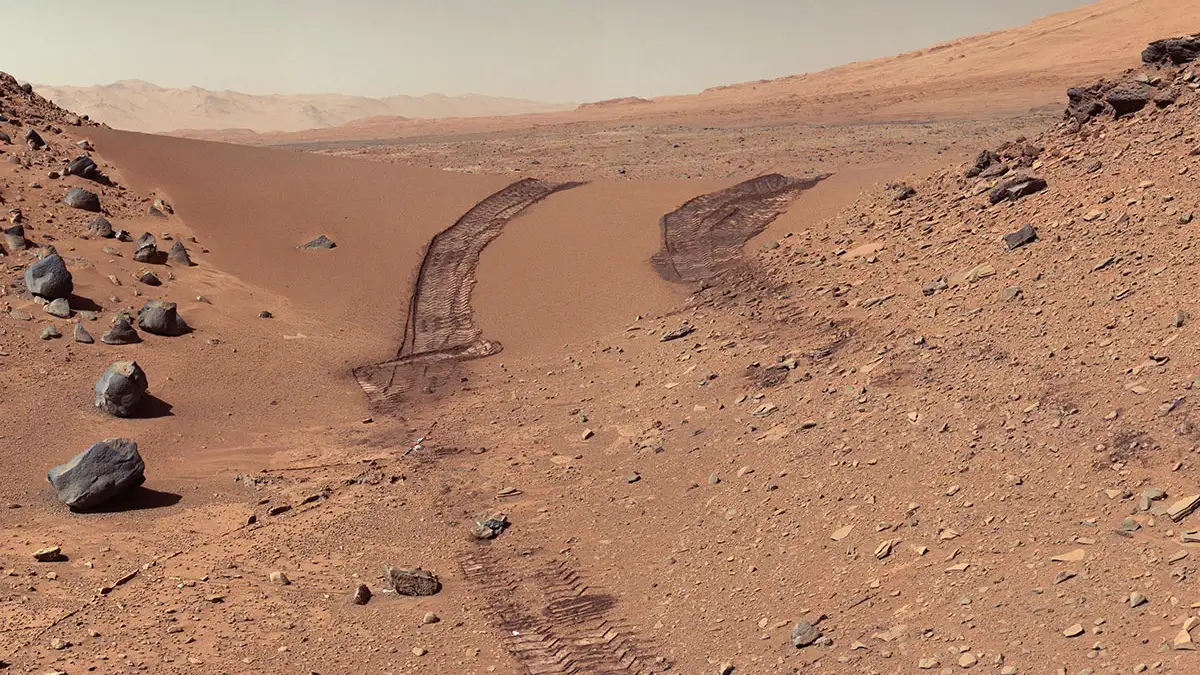Scientists have uncovered patterns on Mars that offer proof of a cyclical climate similar to that on Earth using data from NASA’s Curiosity rover.

Fossilized traces of a cyclical climate with rainy and dry seasons similar to those on Earth have been found on Mars. The creation of complex organic compounds may have occurred under perfect conditions in this environment, where simple chemical molecules have previously been identified.
This finding opens up fresh avenues for investigation into the mechanisms that underlie the beginning of life, of which the Earth has no trace. Scientists have uncovered patterns on Mars that offer proof of a cyclical climate similar to that on Earth using data from NASA’s Curiosity rover. This significant finding offers fresh opportunities for studying the genesis of life.
The study’s findings were released on August 9, 2023, in the journal Nature. It was carried out by researchers from the CNRS, Université Toulouse III – Paul Sabatier, and Université Claude Bernard Lyon 1 with the assistance of CNES.
In contrast to Earth, plate tectonics does not continuously regenerate the surface of Mars. As a result, vast terrain regions that are renowned for their abundance in rivers and lakes made of fossils that date back billions of years have been preserved. Simple organic compounds have been found by NASA’s Curiosity, the first rover to examine such prehistoric relics, since 2012. Both geological and biological processes can produce these compounds.
However, scientists believe that in order for simple life to arise, certain environmental conditions must be present. These circumstances must be conducive for the spontaneous organizing of these molecules into complex organic substances.
A research team from the Institut de Recherche en Astrophysique et Planétologie (CNRS/Université de Toulouse III – Paul Sabatier/CNES) and the Laboratoire de Géologie: Terre, Planètes, Environnement (CNRS/ENS de Lyon/Université Claude Bernard Lyon 1), along with their American and Canadian colleagues, recently discovered precisely such conditions.
They have found salt deposits creating a hexagonal pattern in sedimentary strata ranging from 3.8 to 3.6 billion years ago using the Mastcam and ChemCam instruments on Curiosity. They are the earliest fossil evidence of a persistent, cyclical, regular Martian climate with dry and wet seasons, like the hexagons seen in seasonal terrestrial basins.
Independent laboratory tests have demonstrated that this type of environment offers the optimum circumstances for the development of complex precursor and constituent substances of life, such as RNA, by allowing molecules to interact repeatedly at varying concentrations.
The large-scale photos collected from orbit, which have previously identified multiple terrains with a similar composition, should be given a new perspective by these additional discoveries. Since no signs of the natural processes that gave origin to life are still present on Earth, they now know where to seek for signs of those processes.
Since August 6, 2012, the Mars Science Laboratory mission’s Curiosity Rover of NASA has been exploring the Gale Crater on Mars. The Rover’s goal is to ascertain if Mars has the ideal circumstances for microbial life.
The chemistry of the rocks and soils of Mars is investigated using tools like the ChemCam, a group of remote sensing gadgets. These tools provide researchers a thorough picture of the Martian landscape, enabling them to conduct in-depth and accurate studies of the geology and prospective habitability of the planet.